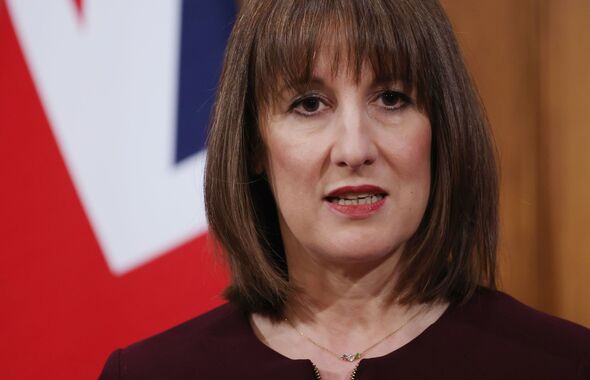
Energy customers have been issued an urgent warning (Image: Getty Images/iStockphoto)
Martin Lewis, the renowned founder of MoneySavingExpert, is issuing a stark warning to millions of energy consumers with suppliers like British Gas and Octopus Energy, cautioning they may be “overpaying and should sort now”. In his recent MSE.com newsletter, he highlighted that from April 1, the Ofgem price cap is poised to surge by 6 per cent.
This increase could add roughly £200 to yearly bills. Lewis flagged a worrying statistic: a whopping 80 per cent of households in Scotland, England, and Wales could be shelling out more due to being on Price Capped tariffs.
He advises people head to a comparison website to “find your cheapest fix and lock in a rate now, to save instantly and prevent the price hike”. The financial guru also observed that the price cap set in April is likely to hold for the rest of the year, reports the Daily Record.
In his newsletter, he said: “Bad News. April’s new Energy Price Cap (is) likely to rise more than previously thought: UP 6%. Fix now to save even before the price jumps (typical £200/yr saving).”
Clarifying Ofgem’s review process, Martin explained that the Price Cap is revised every quarter, and the adjustments are mainly influenced by the mean wholesale rates from the prior mid-November to mid-February period. He concluded, underscoring the certainty of the upcoming hike: “The predictions are now pretty firm. Without intervention, it’s virtually unthinkable that the Cap won’t rise – the only question is by exactly how much.”
Energy titans British Gas, E.On, and EDF have indicated that there might be an uptick of 5 to 6 per cent in the price cap. Money-saving expert Martin Lewis urges customers to move quickly: “Compare to find your cheapest fix and lock in a rate now, to save instantly and prevent the price hike. The Price Cap for the rest of the year, while it’s somewhat crystal ball gazing, is currently predicted to stay roughly at April’s level.”
For the most economical option, MSE.com presents an elaborate guide on the least expensive fix, allegedly yielding a 6.8 per cent saving compared to the current price cap – further information can be found on their site.
Ofgem is poised to disclose the updated price cap values on February 25, with the changes coming into play from April 1 through the end of June.
For those unable to acquire an affordable fixed rate from their existing supplier, it may be advantageous to look into switching. Whether changing providers results in monetary savings depends on individual circumstances.
Examine your existing energy plan by noting both your annual consumption in kilowatt hours (kWh) and your current tariff type – be it fixed, variable or a scheme like Economy 7 or 10 offering different rates during specific hours. It’s crucial to ensure any new supplier can accommodate your current setup and meter.
When seeking new suppliers, it’s advisable to use an Ofgem-accredited price comparison tool, a full list of which can be found on the Ofgem website. Don’t just compare prices when assessing options; consider customer service reviews, reliability scores, and what best matches your needs – whether that’s cost savings, green energy options, or the stability of a fixed-rate plan.
Always examine the daily standing charges and unit rates, as these vary depending on the supplier and tariff. Lastly, check if you qualify for any benefits.
Make sure your potential supplier participates in any government schemes you rely on, such as the Warm Home Discount. If you have a smart meter, confirm its compatibility with the new supplier to prevent inaccurate readings and estimated bills.
You can still switch suppliers if you owe money to your current one, as long as the debt is less than 28 days old. The outstanding amount will be added to your final bill.
However, if the debt is over 28 days old, it must be paid off before switching. Prepayment meter customers are an exception, being able to switch even if they owe up to £500 for gas and £500 for electricity.
It’s important to understand the switching process. Typically, switching takes 21 days, including a cooling-off period, so changes won’t happen instantly.
There’s a 14-day cooling-off period to cancel a switch if you have second thoughts after signing up. If your new supplier is part of the Energy Switch Guarantee, which aims to simplify the process, your transfer to the new deal should be completed within five working days.
Be mindful of early exit fees and always check whether your supplier charges an exit fee for switching before the contract ends. In some cases, this cost might outweigh the benefits of a new deal.
If you can switch without penalty, make sure your old supplier provides a final bill and refunds any credit due. With more people considering changing suppliers, there’s an increased risk of scammers exploiting the situation.
Avoid unsolicited offers made via phone calls or door-to-door sales. Always use trusted channels for switching and be cautious of deals that seem suspiciously cheap.
If it seems too good to be true, it probably is. Consider your future energy needs as your energy consumption and possibly your income level may vary in the future, meaning your usage might not stay consistent year on year.
Ideally, choose a plan that fits your budget comfortably and doesn’t tie you down for a long period before you can switch again without facing a penalty.



















